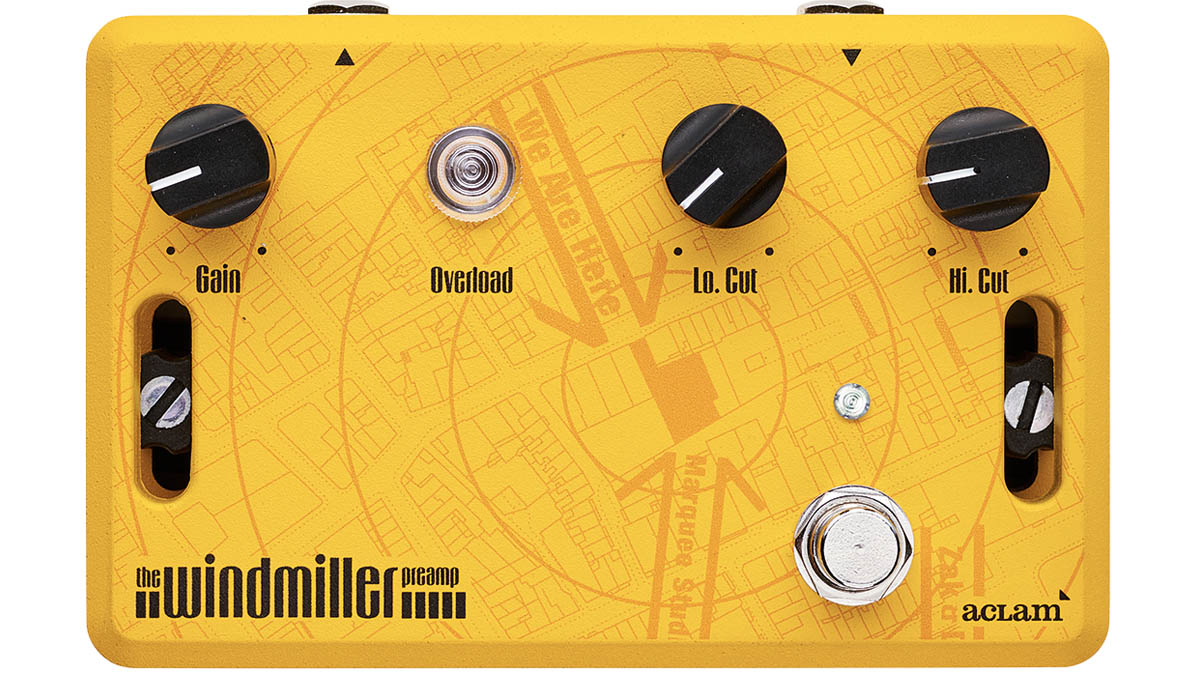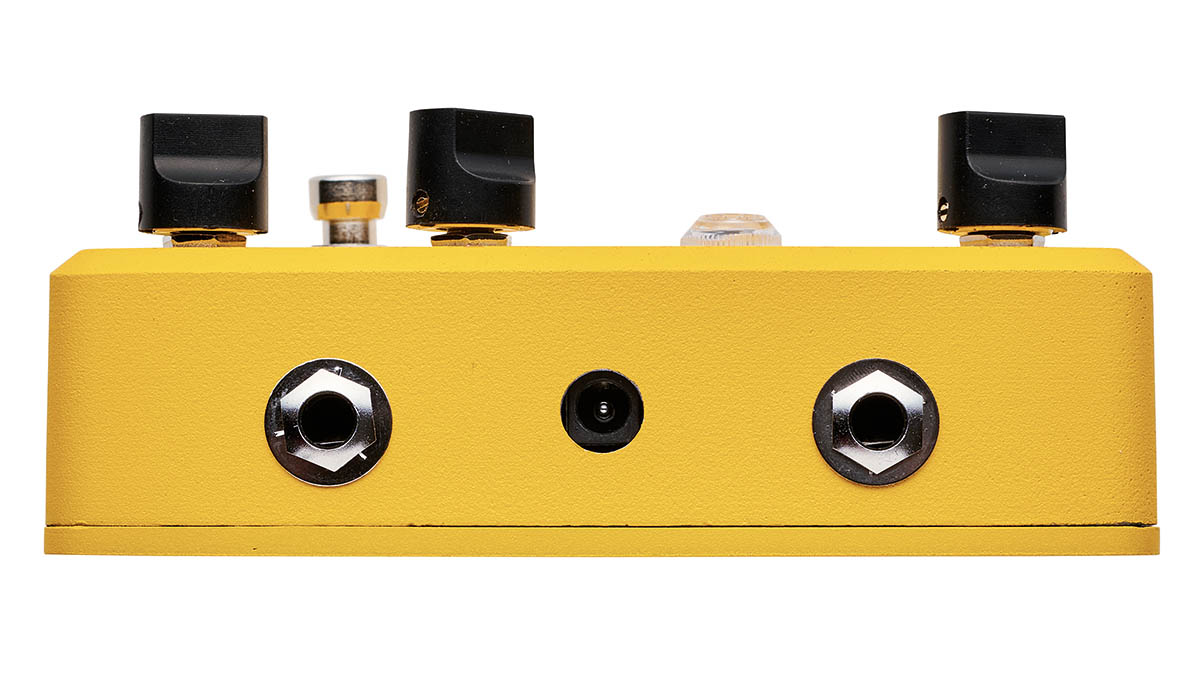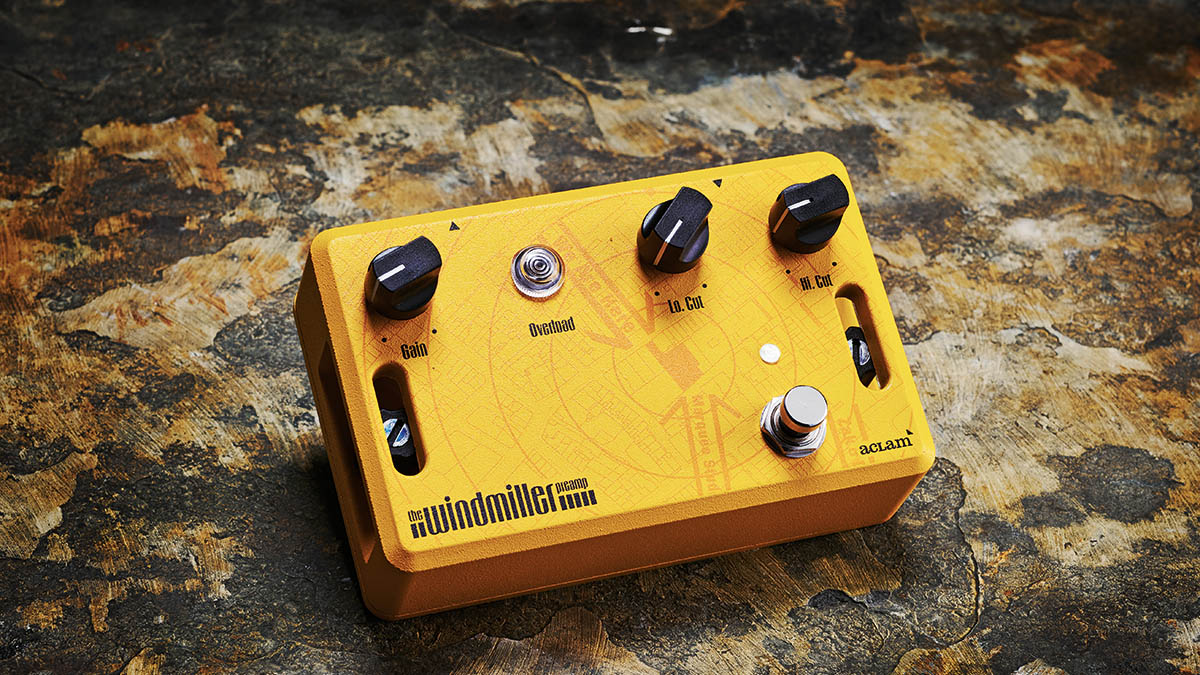Guitar World Verdict
While The Windmiller would be particularly of interest to Who obsessives looking to emulate the raucous '60s sound Pete Townshend was known to describe as “a kind of clear fuzz dirge”, it could also command a place in many disparate rigs as a characterful boost and tone conditioner to enhance the signal chain.
Pros
- +
Rare vintage sound revived.
- +
Practical tone controls.
- +
Quality footswitching.
Cons
- -
It’s a little larger than we’d have liked.
You can trust Guitar World
Way back in the 1960s and early '70s, long before pedals became the rig essential they are these days, guitarists had to look at other ways to inject a little more life into their guitar amps and squeeze more excitement, drive and distortion out of them.
Now, while purpose-built units of the Rangemaster ilk were designed to do just that – and definitely did the business for Rory Gallagher, Tony Iommi and others – certain players relied on more conventional equipment, using it in a role perhaps beyond that for which it was intended.
It’s well documented that Jimmy Page was a fan of the extra gain and tonal shift to be had from the preamp in his Echoplex tape echo unit, while Ritchie Blackmore favoured feeding his amp from the preamp of a modified reel-to-reel tape recorder.
In the case of Pete Townshend back around the 1966/’67 period, the weapon of choice was the preamp in a spring reverb unit – the Grampian Type 636 – which can clearly be seen atop his Marshall amps in many period photographs and videos.
Barcelona-based Aclam Guitars has a nose for seeking out obscure, perhaps forgotten, but crucial gear and resurrecting its tonal mojo – witness its Dr Robert pedal emulating the Vox UL 730 amps used in the studio by The Beatles for a short period – and now the company has done a similar job for the Grampian, taking a vintage unit and indulging in a spot of reverse engineering.
The team has recreated the preamp’s essential sonic qualities while taking time to eliminate the hiss that the original was known for. They’ve also added some features to increase versatility, including Hi- and Lo-Cut filters to roll off treble and bass respectively.

Sounds
To use it in the same way Mr Townshend did back in the '60s, The Windmiller needs to have a guitar plugged directly into it, because it has a low-impedance input that interacts with the pickups to colour the tone in a particular way when it receives the high-impedance output from a guitar.

With the pedal’s Gain knob at minimum there’s a small level boost and an instant tonal shift when you kick it in – a definite enhancement that, to our ears, smoothed out a little harshness while giving the guitar more body and an airy top-end.
Turning up the gain starts to get things cooking as the pedal puts more into your amp, resulting in a lively and dynamic drive that cleans up naturally with guitar volume.
A Strat and The Windmiller into a vintage Marshall JMP50 gave us that classic Townshend sound: edgy raunch with an open clarity that’ll entice you to play chord-driven Who songs of the period such as Substitute or I Can’t Explain. However, The Windmiller could have universal appeal beyond aping the '60s Who style as the classy sounds we also obtained with other guitar and amp combinations proved.

The two tone knobs are really useful in setting The Windmiller up for use with different rigs or pickups, offering fine-tuning rather than anything radical but really helping shape overall tone.
You may wish to roll off some low-end for a leaner sound that’s helpful at higher gain settings, or make things a bit mellower with some hi-cut for spiky pickups. The original Pete Townshend tone came from the interaction of single coils with the Grampian 636, but if you’re using humbuckers some judicious lo-cut control will help you get more into that tonal zone.
Besides being first in the signal chain, The Windmiller can also thrive in other scenarios. Putting a buffered pedal in front of the Aclam so that it is fed with a low-impedance signal means that the colouration from the impedance mismatch is absent so the pedal can be used more as a transparent preamp.
As such, it can be used as a boost for solos or as an always on tonal component with the two filters contributing to the overall tone. There’s plenty of gain of tap and we particularly like the way it can push a drive pedal to another level.
Specs
- PRICE: $310/£289
- ORIGIN: Spain
- TYPE: Preamp pedal
- FEATURES: True bypass, pedalboard fixing system
- CONTROLS: Gain, Lo-Cut, Hi-Cut, Bypass footswitch
- CONNECTIONS: Standard input, standard output
- POWER: 9V DC adaptor (not supplied), 100mA
- DIMENSIONS: 136 (w) x 87 (d) x 55mm (h)
- CONTACT: Aclam Guitars
Trevor Curwen has played guitar for several decades – he's also mimed it on the UK's Top of the Pops. Much of his working life, though, has been spent behind the mixing desk, during which time he has built up a solid collection of the guitars, amps and pedals needed to cover just about any studio session. He writes pedal reviews for Guitarist and has contributed to Total Guitar, MusicRadar and Future Music among others.
"I never use my tube amp at home now, because I have a Spark Live": 5 reasons you should be picking up the Positive Grid Spark Live in the massive Guitar Month sale
“Our goal is to stay at the forefront of amplification innovation”: How Seymour Duncan set out to create the ultimate bass amp solution by pushing its PowerStage lineup to greater heights












